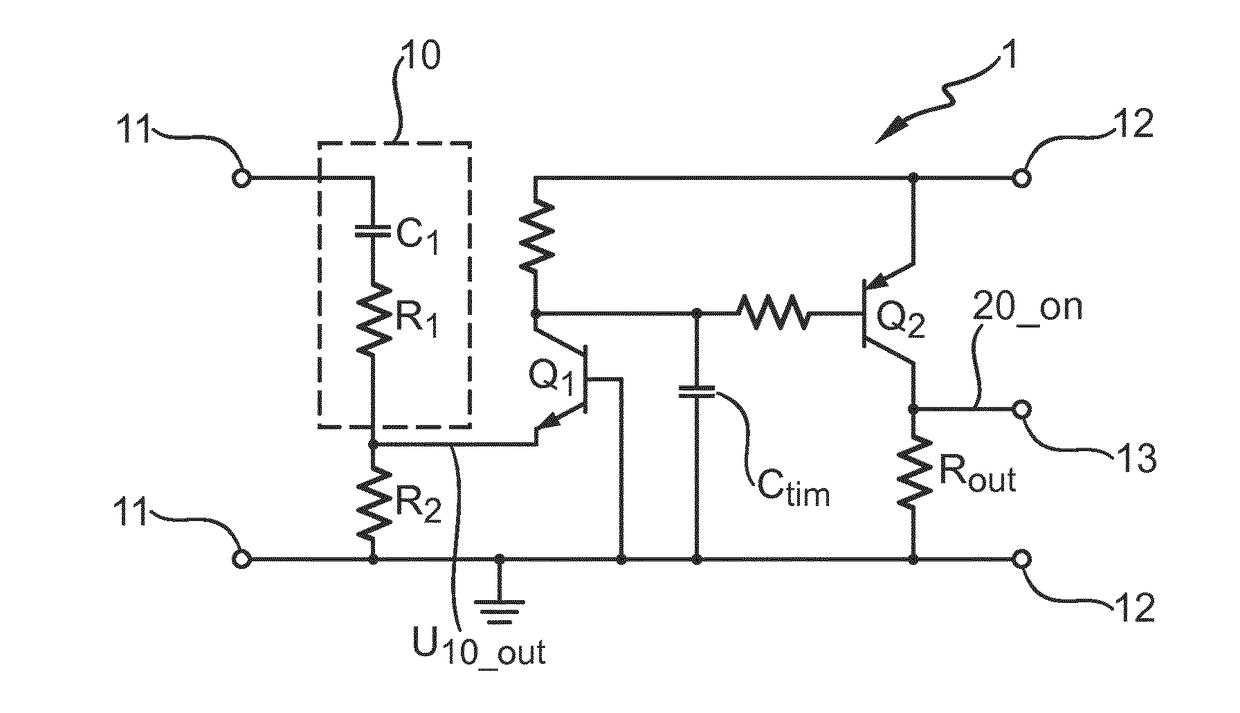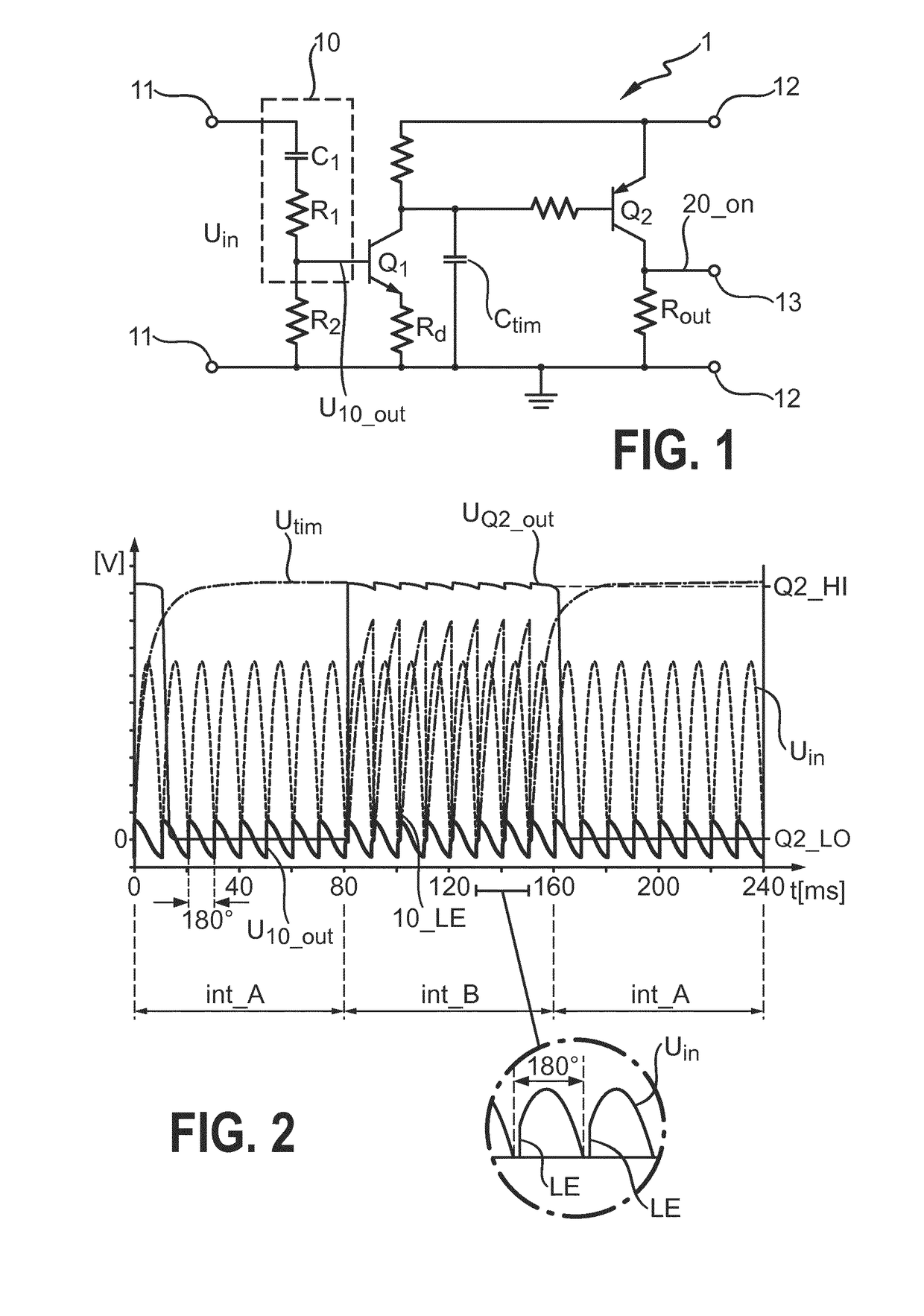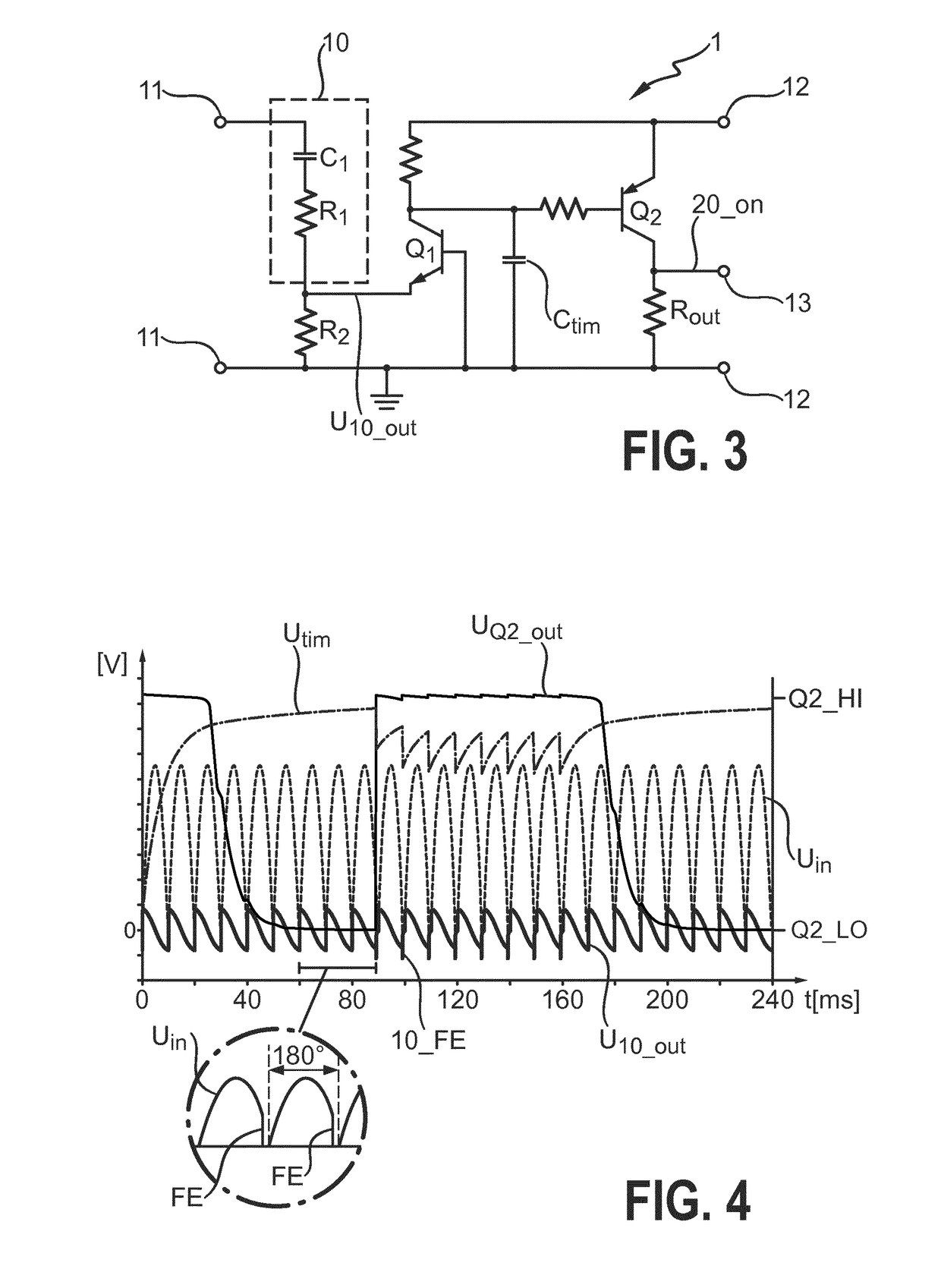Bleeder control arrangement
a control arrangement and bleeder technology, applied in the direction of lighting devices, electrical equipment, light sources, etc., can solve the problems of undesirable visible flicker in the light output, difficult or impossible for the led lamp driver to continuously draw the required minimum holding current, and low average current draw of modern led drivers, so as to improve the performance of the bleeder activation circuit and reliably turn on the first transistor switch
- Summary
- Abstract
- Description
- Claims
- Application Information
AI Technical Summary
Benefits of technology
Problems solved by technology
Method used
Image
Examples
first embodiment
[0040]FIG. 1 shows a simplified circuit diagram of a bleeder control arrangement 1 according to the invention, comprising an edge detector 10, a first transistor switch Q1, a timing capacitor Ctim, and a second transistor switch Q2. The bleeder control arrangement 1 is used to activate a bleeder of a lamp driver if a dimmer, connected between driver and power supply, is actively cutting portions of the power input signal. The input voltage Uin to the bleeder control arrangement 1 will therefore be a rectified voltage signal that may or may not have been subject to phase cutting. The input voltage Uin is applied across input terminals 11. An auxiliary voltage supply, from which a bleeder activation signal 20_on will be derived, is not shown here but will be understood to be connected across terminals 12. The first transistor switch Q1 is an NPN BJT, while the second transistor switch Q2 is a PNP BJT. A sharply increasing rising edge of a leading-edge phase-cut signal is detected by t...
second embodiment
[0042]FIG. 3 shows a simplified circuit diagram of a bleeder control arrangement 1 according to the invention. This embodiment is used to detect and respond to a trailing-edge phase cut on the input voltage signal. The circuit is largely identical to that of FIG. 1, but the output of the edge detector 10 is connected instead to the emitter of the first transistor switch Q1, which in this case is also an NPN BJT. A falling edge of a trailing-edge phase-cut signal is detected by the edge detector 10, which responds by generating a brief negative pulse, which again acts to open a discharge path for the timing capacitor Ctim through the first transistor switch Q1 and resistor R2. Again, the output of the bleeder control arrangement 1 is measured across a resistor Rout between the collector of the PNP transistor Q2 and ground.
[0043]FIG. 4 shows graphs of relevant signals of the bleeder control arrangement of FIG. 3. The input voltage Uin is again subject to phase-cutting during a phase-c...
third embodiment
[0046]FIG. 7 shows a simplified circuit diagram of a bleeder control arrangement 1 according to the invention. Here, the bleeder control arrangement 1 can detect and respond to both a leading-edge and a trailing-edge on a phase-cut signal. In other words, this embodiment of the bleeder control arrangement 1 can be used to detect the action of a leading-edge phase-cut dimmer and / or the action of a trailing-edge phase-cut dimmer. This embodiment is basically the embodiment of FIG. 1, extended to include the functionality of the embodiment of FIG. 3. Leading-edge detection is dealt with by a leading-edge transistor switch Q1LE. Trailing-edge detection is dealt with by another transistor switch Q1FE. This embodiment also shows a ‘logic inverter’14 which can be connected to the collector of the second transistor switch Q2 in order to obtain an output signal with inverted polarity, if such inversion is required. This additional circuitry can be provided so that the bleeder control arrange...
PUM
 Login to View More
Login to View More Abstract
Description
Claims
Application Information
 Login to View More
Login to View More - R&D
- Intellectual Property
- Life Sciences
- Materials
- Tech Scout
- Unparalleled Data Quality
- Higher Quality Content
- 60% Fewer Hallucinations
Browse by: Latest US Patents, China's latest patents, Technical Efficacy Thesaurus, Application Domain, Technology Topic, Popular Technical Reports.
© 2025 PatSnap. All rights reserved.Legal|Privacy policy|Modern Slavery Act Transparency Statement|Sitemap|About US| Contact US: help@patsnap.com



